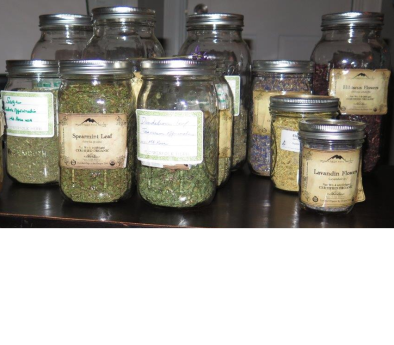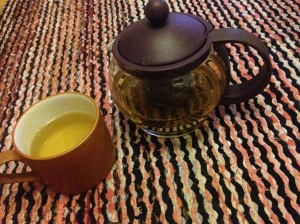A few weeks ago, a dear Swedish friend of mine invited me to join her Swedish Women’s Educational Association’s (SWEA) class on the art of tea blending. Having confirmed the class would be in English, I was so pleased as I love to drink tea! Hot in the chilly winter months and straight from the cool of the fridge in the summer time.
Excited to learn more about this wonderful beverage, I headed over to Somerville and the home of the wonderful herbalist Steph Zabel. Greeted by a beautiful array of dried and fresh herbs we settled down to a cool cup of tea with a small violet frozen in an ice cube. Steph’s calm and positive manner was infectious, we all felt so at ease as she began to guide us through using herbs to make our tea blends
So before you might sit down for your next cup of tea perhaps consider…
The purpose for the tea. Will it be a medicinal tea? One just for enjoying? How do you want it to make you feel? With so many herbs to choose from, there are so many possibilities- Steph gave so many examples but some include:
For an uplifting tea herbs like peppermint or spearmint. For a calm, grounded centered tea herbs like holy basil or perhaps yarrow, or being cleared and uplifted, herbs like lemon balm or lemon grass would be a good choice.
Then to decided is how the tea might be brewed. Some herbs are very delicate and can loose their quality when heated like mallow. In this case, it is best to do a cold infusion when the herbs are added to cold water and left to steep for a few hours or overnight. Steph shared with us a great guide on rough steeping times too which will be very useful in my future preparation of tea blends.
For tea, dried herbs release a greater amount of medicinal compounds as their cell walls break down more easily when dried. They are also more concentrated as they no longer hold any water in their dried state. Steph recommended that if we use fresh herbs rather than dried, we use twice the amount. Although the cell walls may not break down as well, there is often a higher concentration of essential oils in the herbs which will be released into the tea.
After a wonderful discussion of many of the plants that were growing in spring, dandelion flowers we might use in salads, lemon balm we might make into a cordial with brandy and honey and the wonders of nettle soup, we each got to blend our own tea with Steph’s support. I went for a calming tea that would be good to drink an hour or so before bed time. I would highly recommend trying it.
Here is the tea below with 2 parts linden leaves, 1 part of lemon balm and a sprinkle of lavender.
I enjoyed a hot infusion when they weather was a little chilly last week and I felt so calm! The tea also worked well as a cold infusion when I left it overnight in the fridge too.
It was a wonderful evening and if you are local, I highly recommend looking at the classes Steph runs. More details can be found at: http://www.flowerfolkherbs.com/
She also founded Herbstalk, a weekend conference for all those interested in herbs from classes to walks around the local area and a beautiful herbal market- I will write on this wonderful weekend in another blog post. Watch this space!




One thought on “Week 22. The Art of Tea Blending”